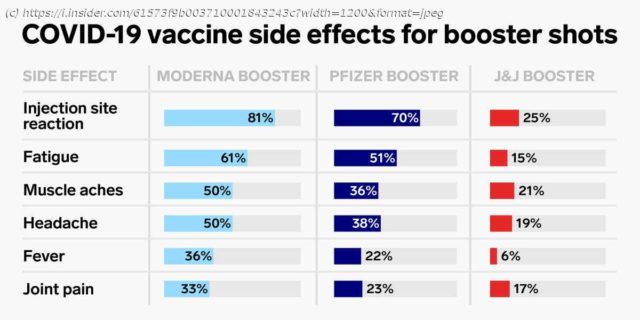Second and third doses of COVID-19 vaccines generally produce similar side effects but there are some slight differences.
In September, the Centers for Disease Control …
Second and third doses of COVID-19 vaccines generally produce similar side effects but there are some slight differences. In September, the Centers for Disease Control and Prevention (CDC) gave the first comparison between booster shots of all three vaccines available in the US: Pfizer and Moderna (both mRNA shots), and Johnson & Johnson (an adenovirus vaccine). It’s one of the most comprehensive looks at how people are responding to boosters to date. Broadly, the CDC found that people who’d received three doses of either Pfizer or Moderna saw more local reactions — pain, itchiness, redness, or swelling at the injection site — after dose three compared to dose two. Other side effects such as fatigue, muscle aches, or headaches were less common, affecting 74% after their third dose, compared with 77% after dose two. A second dose of J&J’s vaccine yielded the fewest side effects of all: Only 10% of J&J booster recipients said their side effects prevented them from performing normal daily activities — usually on the day after their booster shot — while the rest said they were able to go about their day as normal. By comparison,28% of Pfizer or Moderna booster recipients said the shots hindered their daily routine. However, the study included far more data on mRNA boosters — 12,000 people, compared to 48 who received two J&J doses. The following table shows how booster shots affected people who got three doses of Moderna, three doses of Pfizer, or two doses of Johnson & Johnson’s vaccine, according to CDC data.
Start
United States
USA — mix One chart shows the most common COVID-19 booster side effects from Pfizer,...






